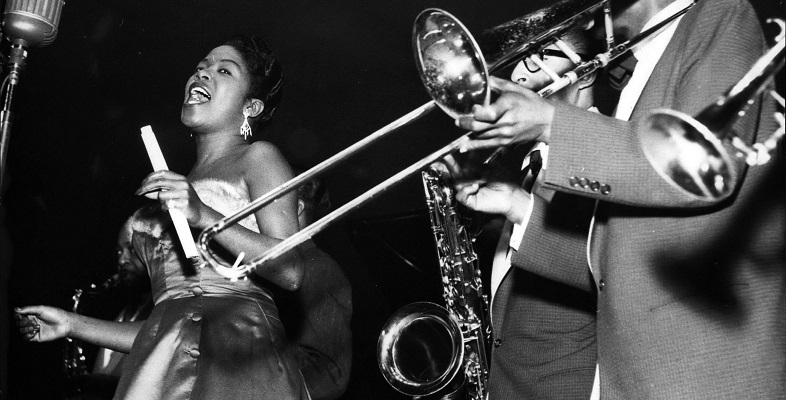8 Using alphabetic designations
The previous activity reveals that musical form often involves nesting or embedding: that is, smaller forms often sit inside larger ones. In a jazz performance, the subsections of an AABA form may sit inside larger patterns of repetition, contrast, and variation.
For this reason, this set of courses typically uses upper-case letters to designate larger, more global aspects of form, and lower-case letters for smaller, more local ones. For example, the opening of Powell and Byas’s performance of ‘Just One of Those Things’ might be represented as in Table 11, with the upper-case As in the column on the left representing the sequence of choruses, and the lower-case letters in the ‘subsection’ column representing the constituent parts of each chorus.
Notice that in this table, while ‘AABA’ has until now been spelled out in upper case, here it’s ‘aaba’ in lower case. This is a result of zooming out to a larger, more overarching layer of the form, in which bigger letters represent the bigger picture.
| Section | Subsection | Track time | Notes |
| I | 00:00 | Introduction | |
| A | a | 00:06 | Head |
| a | 00:19 | ||
| b | 00:31 | ||
| a | 00:43 | ||
| A | a | 00:55 | First solo chorus: Byas, saxophone |
| a | 01:08 | ||
| b | 01:20 | ||
| a | 01:32 | ||
| A | a | 01:45 | Second solo chorus: Byas, saxophone |
| a | 01:57 | ||
| b | 02:10 | ||
| a | 02:22 |
Activity 9 Returning to the instrumental version of ‘Just One of Those Things’
Listen two or three times more to the opening at 02:35 of Powell, Byas, Michelot and Clarke’s performance in Audio 7 [Tip: hold Ctrl and click a link to open it in a new tab. (Hide tip)] . Try to follow both the larger sections of the form (the three As in the left-hand column of Table 11) and the subsections within these (marked aaba).
Again, you may find that humming the song’s original melody helps you keep track of the form during the improvised choruses.
Another symbol that can be useful when distinguishing sections of the form is the prime (′) mark, which helps to distinguish sections that feature variation rather than contrast.
For instance, the two solo choruses that follow the head in Table 11 above feature improvisation by a soloist rather than the familiar melody of the song. If you wanted to make a point of this variation, you might mark the A at 00:55 as A′ and the A at 01:45 as A″ (that is, with a prime mark and a doubled prime mark, respectively) to distinguish them.
